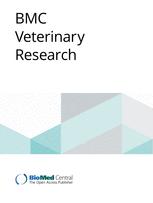Ver ítem
- xmlui.general.dspace_homeCentros Regionales y EEAsCentro Regional Buenos Aires SurEEA BalcarceArtículos científicosxmlui.ArtifactBrowser.ItemViewer.trail
- Inicio
- Centros Regionales y EEAs
- Centro Regional Buenos Aires Sur
- EEA Balcarce
- Artículos científicos
- Ver ítem
Phenotypic characterisation of the cellular immune infiltrate in placentas of cattle following experimental inoculation with Neospora caninum in late gestation
Resumen
Despite Neospora caninum being a major cause of bovine abortion worldwide, its pathogenesis is not completely understood. Neospora infection stimulates host cell-mediated immune responses, which may be responsible for the placental damage leading to abortion. The aim of the current study was to characterize the placental immune response following an experimental inoculation of pregnant cattle with N. caninum tachyzoites at day 210 of gestation. Cows were
[ver mas...]
Despite Neospora caninum being a major cause of bovine abortion worldwide, its pathogenesis is not completely understood. Neospora infection stimulates host cell-mediated immune responses, which may be responsible for the placental damage leading to abortion. The aim of the current study was to characterize the placental immune response following an experimental inoculation of pregnant cattle with N. caninum tachyzoites at day 210 of gestation. Cows were culled at 14, 28, 42 and 56 days post inoculation (dpi). Placentomes were examined by immunohistochemistry using antibodies against macrophages, T-cell subsets (CD4, CD8 and γδ), NK cells and B cells. Macrophages were detected mainly at 14 days post inoculation. Inflammation was generally mild and mainly characterized by CD3+, CD4+ and γδ T-cells; whereas CD8+ and NK cells were less numerous. The immune cell repertoire observed in this study was similar to those seen in pregnant cattle challenged with N. caninum at early gestation. However, cellular infiltrates were less severe than those seen during first trimester Neospora infections. This may explain the milder clinical outcome observed when animals are infected late in gestation.
[Cerrar]

Autor
Canton, German Jose;
Katzer, Frank;
Benavides-Silván, Julio;
Maley, Stephen W.;
Palarea-Albaladejo, Javier;
Pang, Yvonne;
Smith, Sionagh;
Bartley, Paul M.;
Rocchi, Mara;
Innes, Elisabeth A.;
Chianini, Francesca;
Fuente
Veterinary Research 44 : 60 (2013)
Fecha
2013-07
Editorial
BMC
ISSN
0928-4249
1297-9716
1297-9716
Formato
pdf
Tipo de documento
artículo
Palabras Claves
Derechos de acceso
Abierto
 Excepto donde se diga explicitamente, este item se publica bajo la siguiente descripción: Creative Commons Attribution-NonCommercial-ShareAlike 2.5 Unported (CC BY-NC-SA 2.5)
Excepto donde se diga explicitamente, este item se publica bajo la siguiente descripción: Creative Commons Attribution-NonCommercial-ShareAlike 2.5 Unported (CC BY-NC-SA 2.5)


